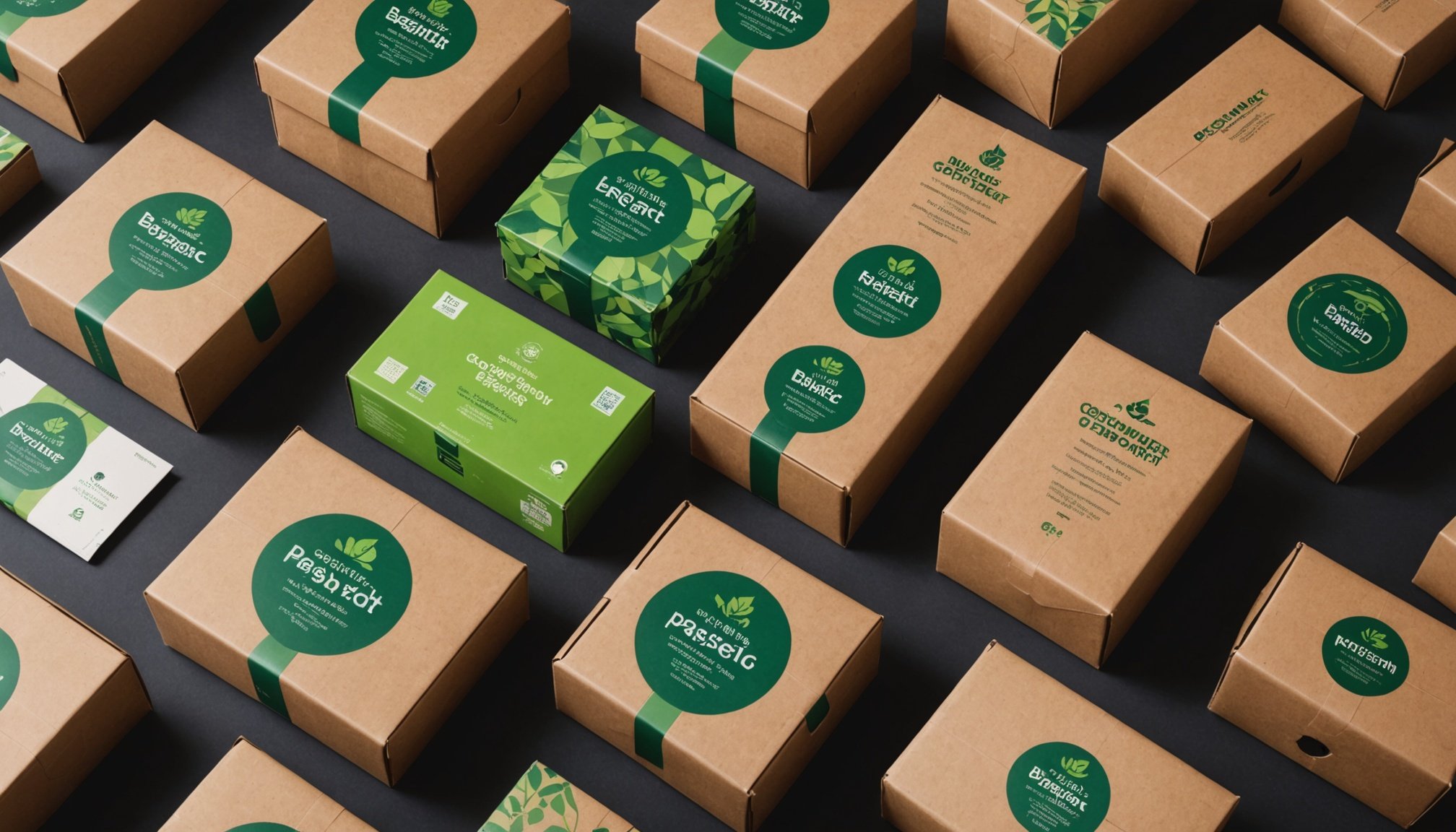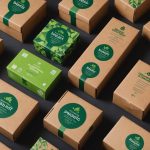Recent Innovations in Eco-Friendly Packaging
In response to the growing demand for eco-friendly packaging solutions, UK consumer goods companies are pioneering new trends that focus on sustainable materials and innovative design. Recent developments have seen the rise of biodegradable and compostable materials that reduce environmental impact and waste.
Sustainable materials are gaining traction, with companies exploring alternatives such as bamboo, cornstarch, and mushroom-based packaging. These materials not only promise environmental benefits but also maintain the functionality and durability needed for various consumer goods.
Also to discover : Exploring Creative Strategies for Workplace Wellness Initiatives in UK Businesses
Design innovations also play a critical role in the evolution of eco-friendly packaging. Companies are rethinking the structural design of packaging to minimise material use while maximising functionality. Some innovations include smart designs that facilitate recycling, such as easily separable components, and packaging that doubles as reusable storage solutions.
Several UK companies have been at the forefront of these innovative packaging solutions. For instance, a well-known cosmetics brand recently switched to using recycled materials for its packaging, significantly reducing its carbon footprint. Another successful case involved a food company that adopted compostable packaging for its range of organic products, earning widespread acclaim and increasing consumer engagement. These case studies highlight how adopting eco-friendly packaging in the consumer goods sector can drive positive environmental change and bolster company reputations.
In the same genre : Essential Factors UK Companies Must Consider When Integrating AI into Their Marketing Strategies
Sustainable Materials Revolution
The push towards sustainable packaging materials aims to curb environmental impact by adopting innovative solutions. Let’s explore key aspects of this revolution.
Biodegradable Materials
Biodegradable options offer promising solutions to environmental concerns. These materials break down naturally over time, reducing waste accumulation. Polylactic acid (PLA), commonly derived from corn starch, is a prevalent biodegradable option. It finds applications in products such as food containers and cutlery. Another option gaining traction is starch blends, used in packaging peanuts and bags. The challenge lies in ensuring these materials break down efficiently in varied conditions.
Plant-based Plastics
Plant-based plastics are sourced from renewable resources like sugarcane, offering a reduced carbon footprint compared to conventional plastics. Polythene made from sugarcane releases fewer emissions during production, making it a popular choice for eco-friendly brands. Plant-based plastics can replace traditional materials in items like bottles and films. Despite their benefits, the production scale and cost efficiency are areas of ongoing development.
Recycled and Upcycled Materials
Recycling and upcycling play a crucial role in sustainable packaging. Using recycled content reduces dependency on virgin resources, saving energy and reducing emissions. Compared to virgin materials, recycled options often consume less energy in production. Upcycled materials, like fabrics made from PET bottles, highlight innovative re-use strategies. However, maintaining product quality and safety standards with recycled materials remains a challenge.
Environmental Impact Assessment
The environmental impact of packaging is a crucial aspect that demands comprehensive evaluation. The lifecycle analysis plays a pivotal role in assessing the carbon footprint associated with different packaging options. Unlike traditional packaging, eco-friendly alternatives generally present a lower environmental impact due to the materials and processes used in their production.
One significant factor is the carbon footprint. Traditional packaging often involves extensive use of plastics and other materials that emit high levels of carbon during production and disposal. Conversely, eco-friendly options are designed to minimize this impact by using biodegradable or recyclable materials. Additionally, these sustainable choices often require less energy and resources, further reducing their overall carbon emissions.
Lifecycle analysis is essential. It evaluates every stage of a product’s life—from production to disposal—to determine its total environmental impact. This holistic approach ensures that no stage contributes disproportionately to the carbon footprint, providing a comprehensive understanding of the environmental impact.
In the UK, many brands are taking proactive steps to measure and improve their carbon footprint. By implementing data-driven strategies based on lifecycle analysis, these companies can identify areas for improvement and innovate in reducing their environmental impact. These efforts not only enhance sustainability but also align with growing consumer expectations for environmentally responsible practices.
Regulatory Considerations in Eco-Friendly Packaging
Navigating the landscape of packaging regulations is crucial for businesses aiming to adopt eco-friendly solutions. In the UK, compliance with current regulations ensures that packaging meets environmental standards, focusing largely on recyclability and waste reduction. These regulations are not merely suggestions but are mandated by various bodies to align with sustainability goals.
Impact of UK Government Policies
The UK government policies influence the shift towards eco-friendly packaging significantly. They provide frameworks that encourage businesses to innovate and adapt to more sustainable practices. This includes incentives for using biodegradable materials and penalties for non-compliance. These policies aim to reduce carbon footprints and promote a circular economy.
Future Regulatory Trends
As we look ahead, businesses should prepare for more stringent regulations. The trend is leaning towards greater accountability, with potential introduction of extended producer responsibility programs. This would require producers to take charge of the entire lifecycle of their products, ensuring minimal environmental impact. Organizations must stay informed and proactive to stay compliant.
Adapting to these evolving regulations not only ensures compliance but also presents opportunities for companies to enhance their brand reputation. By prioritizing sustainability and aligning with government policies, businesses can gain a competitive edge in an increasingly eco-conscious market.
Expert Perspectives on Future Trends
Understanding the future of packaging involves examining a range of expert opinions and industry forecasts. Changes in consumer behaviour, driven by environmental awareness and a demand for convenience, are playing pivotal roles in shaping the industry.
Innovations on the Horizon
Packaging innovation is set to reshape sustainability efforts. Bio-based materials and recyclable options will likely become mainstream, as companies aim to reduce their environmental impact. Emerging technologies promise smarter, adaptable designs that minimize waste while maintaining product integrity.
Consumer Preferences Shaping Design
Consumer preferences are transforming packaging design substantially. Shifts towards minimalism emphasise eco-friendly materials and multi-use designs. Sustainability isn’t just a buzzword; it has become a necessity that brands must integrate into their packaging strategies to meet customer expectations effectively.
Integration of Technology in Packaging
Technology plays a crucial role in the evolution of packaging. Smart packaging solutions, such as NFC tags and QR codes, are providing innovative ways to offer interactive customer experiences. These technologies allow consumers to access product information instantly, enhancing the buying experience and building brand loyalty. Industry experts suggest that such technologies will be integral to packaging solutions, pushing the envelope in personalization and connectivity.
Comparative Analysis of Packaging Options
When it comes to packaging comparison for consumer goods, a key factor is the variety of eco-friendly options available. Brands are increasingly prioritising sustainability, yet the range of materials that align with both environmental standards and business needs continues to grow.
Performance Metrics
Delving into performance metrics, materials such as recycled cardboard, biodegradable plastics, and compostable films are commonly evaluated. These metrics often include durability, moisture resistance, and impact on product shelf-life. Recycled cardboard typically fares well in preserving structural integrity and providing adequate protection for items. Meanwhile, biodegradable plastics offer the advantage of reducing waste, albeit sometimes at the expense of durability.
Cost-Effectiveness
When considering cost-effectiveness, sustainable packaging options vary significantly. Although initial costs for eco-friendly materials may appear high, they often result in long-term savings by reducing waste management expenses and enhancing brand reputation. Economies of scale also play a role—brands producing at high volumes may find these options more financially viable compared to smaller enterprises. Factors such as supply chain efficiency and consumer demand for sustainable products also impact the cost-effectiveness of these packaging solutions.
To make informed decisions, brands should weigh these elements, balancing ecological impact with practical business considerations. This approach ensures that both environmental concerns and cost-efficiency are addressed, paving the way for more sustainable industry practices.











